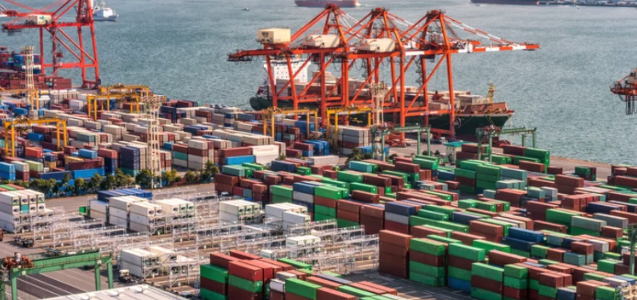The Benefits of Real-Time Visibility in Drayage Operations

Integrating real-time visibility into drayage operations can bring process improvements as well as increase customer satisfaction. Here’s how.
Drayage, as a subset of trucking, plays a crucial role in the transportation of ocean and domestic intermodal containers. Its primary focus is on facilitating the movement of these containers and trailers between ports, warehouses, rail depots, and cargo recipients.
Recognized as an integral link within the supply chain, any delays or disruptions in drayage operations can have far-reaching consequences, impacting the entire chain.
With the advent of the latest technologies supporting real-time visibility, supply chains have the opportunity to enhance transparency and efficiency. Real-time visibility enables cargo owners and receiving warehouses to closely monitor the progress of their shipments while in transit.
This capability provides valuable insights that aid in planning or adjusting receiving operations, identifying potential issues in a timely manner, and ultimately making decisions that ensure smooth transportation of shipments from pickup to delivery.
The Importance of Real-Time Visibility in Drayage
By leveraging real-time visibility, supply chain stakeholders can proactively address challenges and streamline their processes, resulting in improved overall performance and customer satisfaction.
The benefits of integrating real-time visibility into drayage operations are plentiful, including:
Substantiated detention and demurrage claims: The contentious issue of billing accurately is at the forefront of shippers’ minds and bottom lines, and accurate location data can defend against overcharges by terminals, carriers, and pool operators.
Enhanced customer satisfaction: Keeping customers informed about the status of their shipments boosts overall satisfaction. Conversely, a lack of real-time delivery information leads to customer service teams receiving and responding to multiple calls and complaints, and tends to erode the relationship between all parties.
Boosted efficiency: By identifying bottlenecks and inefficiencies, real-time visibility facilitates changes that enhance efficiency and cut costs. Productivity and efficiency are both increased through streamlined communications.
Increased safety and security: An estimated $223 million in cargo was stolen in 2022, according to an analysis by Verisk’s CargoNet. Real-time tracking of drivers and cargo helps prevent accidents and can be an early warning sign of a theft-related diversion or interception.
Found opportunities to meet sustainability targets: Routing, traffic, transit and waiting time data can be collected and analyzed to optimize routes and accurately measure carbon and greenhouse gas emissions, and proactive steps can be taken to reduce a supply chain’s environmental impact.
As government regulations continue to evolve and as companies seek to address environmental concerns to not only meet these requirements, but to also be good stewards, accurately measuring and monitoring emissions will become increasingly important.
Technologies Enabling Real-Time Visibility
Several technologies can work in tandem to enable real-time visibility in drayage operations:
GPS tracking: Drayage trucks can be tracked in real-time, providing companies’ transportation management systems (TMS) with accurate and up-to-date information on truck locations and movements. GPS can enhance asset management and recovery, promote driver safety, and improve theft prevention.
Industrial IoT (Internet of Things) and M2M (Machine to Machine) Monitoring: This enables location and mileage tracking to enhance prevention maintenance programs. Cargo owners and receiving warehouses utilizing IoT and M2M are better able to monitor and analyze data to gain insight on how to improve all areas of operations and reduce costs.
Client-facing APIs: Clients can have immediate access to spot rates, streamlined quote submissions, and seamless retrieval of proof of delivery (POD) and other crucial documentation directly from their digital devices. This saves time, reduces the likelihood of errors, and contributes to overall optimization.
Cargo owners and receiving warehouses should look to vendors who harness the power of real-time visibility to enhance drayage operations. This data is invaluable in supervising and optimizing operations, identifying potential issues, and making informed decisions.
Real-time visibility has quickly transitioned from a luxury to an essential component of modern logistics. Embracing the latest technology and adopting real-time visibility solutions enable companies to achieve their operational objectives, enhance financial control, and deliver exceptional customer satisfaction. It empowers us to stay ahead of the curve in an increasingly dynamic and demanding industry.

